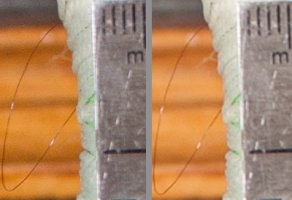privatebydesign said:
Now, do you have any example images that demonstrate your assertions or not?
I'd like to see that, as well. But only as a comparison between APS-C and FF...not just how sharp a shot with the 7D can be.
I recall a couple of posts by AlanF, where he performed mathematical calculations to determine the theoretical resolution advantage of the 7D over the 6D, followed by shots of a feather with his 7D and 300/2.8L IS II + 2xIII, showing how the image approached the theoretical limit of resolution, concluding that the 7D must outresolve the 6D.
Then he got himself a 5DIII and compared the real world performance of the two. He found that despite his earlier theoretical predictions and testing (testing only the 7D), the IQ of the cropped 5DIII image was equivalent to the 7D. I found the same thing with my 1D X and 600 II, which is why I eventually sold the 7D (that, and the higher hit rate with the better AF system).
My conclusion matches that of PBD - when looking at real world images, the 'extra reach' of the APS-C sensor is an illusion, provided that the cropped image from the FF sensor gives you sufficient resolution for your desired output format. Plus, that applies only at low ISO - at high ISO (>800), the IQ advantage of the cropped FF image progressively surpasses the APS-C image as the ISO increases.





